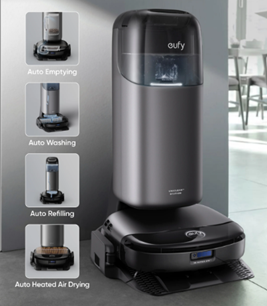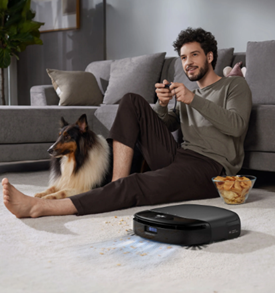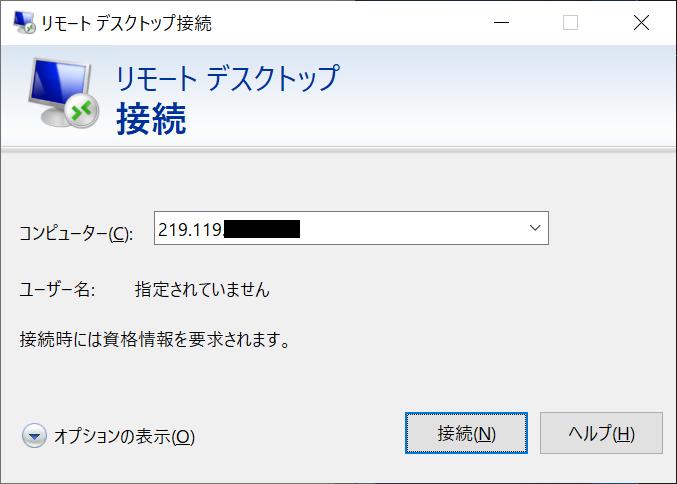Robot vacuums have entered many homes, promising effortless cleaning and smart convenience. These small, autonomous devices are often seen as a modern solution to the age-old problem of keeping carpets clean. But can they truly match up to the tried-and-tested methods of traditional carpet cleaning? That’s the question many homeowners are asking as they consider upgrading their cleaning routine.In this article, we’ll explore whether robot vacuums can effectively take over from traditional cleaning methods. We’ll break down how these machines work, analyze their performance across different carpet types, and evaluate their key benefits and limitations. We’ll also take a close look at traditional carpet cleaning methods and understand why they’re still crucial in certain scenarios. Finally, we’ll offer insight into how robot vacuums can fit into your overall home cleaning plan—not as a total replacement, but as a powerful supplement.

Understanding Robot Vacuums
Robot vacuums are designed to offer a hands-free approach to regular floor maintenance. Let’s explore what makes them tick.
How Robot Vacuums Work
Robot vacuums use a combination of sensors, cameras, and software algorithms to navigate through a space. These sensors help them detect walls, furniture, and other obstacles. Many models create a digital map of your home, which allows them to follow a systematic cleaning path instead of moving randomly. Some advanced models can even store multiple floor maps for multi-level homes.They operate on rechargeable batteries and can return to their charging docks automatically when the battery runs low. Once recharged, some models resume cleaning where they left off. Users can control the device through mobile apps, voice assistants, or preset schedules.
Key Features of Modern Robot Vacuums
Modern robot vacuums come packed with features that make them smarter and more efficient. Common capabilities include:
Wi-Fi connectivity for app-based controls and remote scheduling.
Voice assistant integration for easy voice commands.
HEPA filters to trap dust, allergens, and pet dander.
Multi-surface cleaning for transitioning from carpets to hard floors.
Self-emptying bins in some high-end models, reducing the need for manual maintenance.
These features enhance the convenience of owning a robot vacuum and make them a suitable option for regular upkeep.
Performance on Different Carpet Types
Not all carpets are created equal—and robot vacuums don’t perform uniformly across every type. Here's how they stack up on different carpet textures.
Low-Pile Carpets
Robot vacuums perform best on low-pile carpets. The shorter fibers are easy to navigate, and most robot vacuums can effectively remove dust, pet hair, and small debris from these surfaces. Their wheels and brushes don’t get tangled as easily, and suction power is usually sufficient for maintaining cleanliness.
Medium-Pile Carpets
Medium-pile carpets present more resistance. Some robot vacuums may find it harder to move smoothly, particularly if the brushes are not designed for thicker carpets. While high-suction models may still do a reasonable job, they often struggle to match the deep cleaning provided by traditional vacuums, especially when debris settles deep in the fibers.
High-Pile Carpets
High-pile and shag carpets are the most challenging for robot vacuums. These carpets have dense, long fibers that can obstruct movement and reduce cleaning efficiency. Robot vacuums may skip over dirt, get tangled, or drain their batteries more quickly while trying to cover these surfaces. Traditional vacuums, with adjustable height settings and stronger suction, are more suitable for cleaning these types of carpets thoroughly.
Advantages of Robot Vacuums
Despite their limitations, robot vacuums offer several compelling benefits that have made them popular among homeowners.
Convenience and Automation
The standout advantage of robot vacuums is automation. Once programmed, they can clean without any manual effort. Whether you're at work, running errands, or relaxing at home, your robot vacuum can handle daily cleaning tasks in the background. Some models even let you customize cleaning zones and no-go areas to improve efficiency.
Consistent Maintenance Cleaning
Regular vacuuming is key to maintaining carpet health and appearance. Robot vacuums excel in providing consistent cleaning. Their ability to run on a daily or weekly schedule reduces the build-up of dirt, dust, and allergens. This makes them particularly helpful for households with pets or people with allergies.Over time, consistent maintenance can help extend the life of your carpet by preventing deep-set grime and reducing wear and tear caused by embedded particles.

Role of Traditional Carpet Cleaning
While robot vacuums handle maintenance well, they fall short when it comes to deeper cleaning needs. That’s where traditional cleaning methods still shine.
Deep Cleaning Capabilities
Traditional carpet cleaning—whether using a standard vacuum or a carpet shampooer—offers a level of depth robot vacuums can’t achieve. These machines are designed to agitate carpet fibers, lift embedded dirt, and often use suction that’s significantly stronger than robot vacuums. Additionally, hot water extraction and steam cleaning options can sanitize and refresh carpets more thoroughly.
Handling Stubborn Stains and Debris
Stubborn stains from spills, pet accidents, or tracked-in mud require targeted treatment. Traditional vacuum cleaners, equipped with attachments and higher suction power, can remove larger debris and loosen dirt from deep within the carpet pile. In contrast, most robot vacuums are not built to handle these scenarios and will simply glide over such messes.Professional carpet cleaners or specialized machines are often necessary to remove long-standing stains and odors that robot vacuums cannot address.
Integrating Robot Vacuums into Your Cleaning Routine
Rather than choosing one over the other, many homeowners find the best results by combining robot vacuums with traditional cleaning methods.
Combining Robot and Traditional Vacuuming
The most effective strategy involves using robot vacuums for daily or frequent surface cleaning, and scheduling traditional vacuuming or deep-cleaning sessions weekly or monthly. This hybrid approach keeps carpets looking fresh while also ensuring a hygienic living space.For example, your robot vacuum can run every day to keep up with pet hair and dust, while a traditional vacuum or carpet cleaner can be used once a week to clean high-traffic areas more thoroughly.
Conclusion
Robot vacuums offer remarkable convenience, making daily carpet maintenance easier than ever. Their automated schedules, smart navigation, and app-based controls provide a hands-off cleaning experience. However, when it comes to deep cleaning, stain removal, and high-pile carpets, traditional cleaning methods still have the upper hand.So, can robot vacuum for carpets replace traditional carpet cleaning entirely? Not quite—but they’re a valuable addition to your cleaning toolkit. By combining both approaches, you can achieve a consistently clean home with minimal effort, while still ensuring your carpets stay in top condition for years to come.

![Lenovo's 8.8 inch one-handed tab "Legion Y700" full specs released! [Is the price in the 40,000 yen range?]](https://website-google-hk.oss-cn-hongkong.aliyuncs.com/drawing/article_results_9/2022/3/9/207e1be231154e91f34c85b4b1d2126c_0.jpeg)
![EVsmart blog Toyota's electric car "bZ4X" that makes you feel comfortable with electric cars and quick chargers / No% display of battery level [Editorial department] Popular articles Recent posts Category](https://website-google-hk.oss-cn-hongkong.aliyuncs.com/drawing/article_results_9/2022/3/9/752542064665dc2bd7addbc87a655694_0.jpeg)

